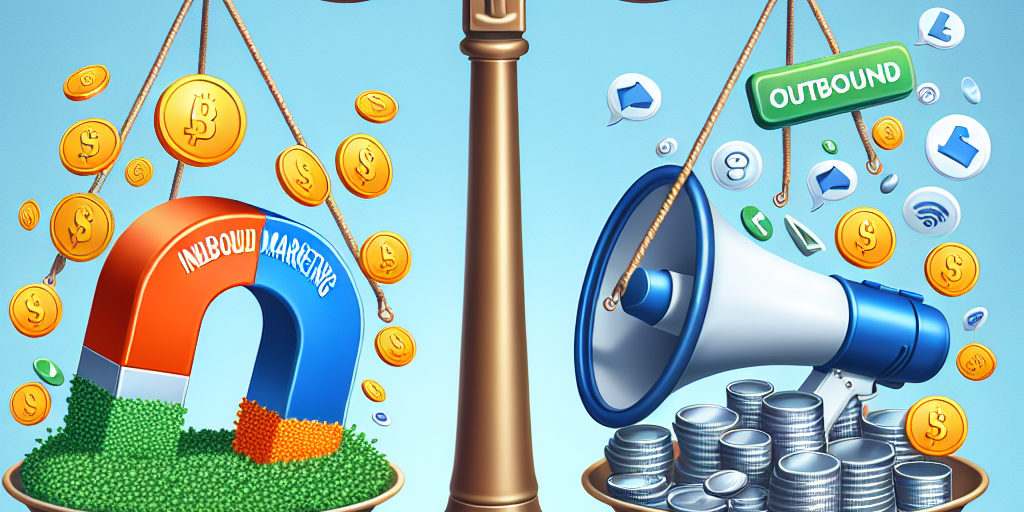Finding the Right Balance for Your Brand: Inbound vs. Outbound Marketing
In the evolving landscape of digital marketing, brands are continually seeking effective strategies to capture the attention of their target audience. The two predominant approaches are Inbound Marketing and Outbound Marketing. Understanding these strategies and finding the right balance between them can be the key to a robust marketing plan that drives engagement and growth.
Inbound Marketing: Attraction Through Value
Inbound marketing is a strategy focused on attracting customers by creating valuable content and experiences tailored to them. Unlike traditional outbound methods, inbound marketing aims to pull in potential customers through helpful, informative, and engaging content.
Key Components of Inbound Marketing:
- Content Marketing: Through blogs, videos, ebooks, and other forms of content, brands provide valuable information that addresses the needs and interests of their audience. This not only establishes the brand as an authority but also builds trust.
- SEO (Search Engine Optimization): By optimizing content for search engines, brands ensure their content reaches a larger audience organically.
- Social Media Marketing: Leveraging social platforms to share content and engage with the audience helps in building a community around the brand.
- Email Marketing: Personalizing communication and nurturing leads through segmented email campaigns turn potential customers into loyal advocates.
The allure of inbound marketing lies in its ability to create long-term relationships and foster brand loyalty. By providing value first, brands attract customers who are genuinely interested in what they have to offer.
Outbound Marketing: Direct Promotion
Outbound marketing, often referred to as traditional marketing, involves pushing a message out to a large audience. This method includes paid advertisements, direct mail, cold calling, and more traditional forms like TV and radio ads.
Key Components of Outbound Marketing:
- Advertising: Through various channels like TV, radio, print, and online ads, brands can reach a wider audience and create immediate awareness.
- Email Blasts: Unlike the targeted approach of inbound email marketing, outbound email campaigns aim to reach as many potential customers as possible.
- Cold Calling: Directly reaching out to potential customers can be an effective way to generate leads quickly.
- Trade Shows and Events: These platforms provide an opportunity for face-to-face interaction, allowing brands to showcase their products and services to a targeted audience.
Outbound marketing can be highly effective for creating brand awareness and driving immediate sales. However, it can also be intrusive and less personalized than inbound methods.
Finding the Right Balance
The key to a successful marketing strategy is finding the right balance between inbound and outbound marketing. Here are a few steps to help you achieve this balance:
-
Understand Your Audience: Conduct thorough market research to understand your audience’s preferences, behavior, and pain points. This knowledge will help you tailor both inbound and outbound strategies effectively.
-
Set Clear Goals: Define what you want to achieve with your marketing campaigns. Whether it’s brand awareness, lead generation, or customer retention, clear goals will dictate the right mix of inbound and outbound tactics.
-
Integrate Strategies: Instead of viewing inbound and outbound marketing as separate entities, integrate them to complement each other. For instance, use outbound advertisements to drive traffic to your valuable inbound content.
- Measure and Adjust: Continuously monitor the performance of your marketing campaigns. Use analytics to measure the effectiveness of both inbound and outbound efforts, and be ready to adjust your strategies based on what the data reveals.
Conclusion
In the end, neither inbound nor outbound marketing reigns supreme on its own. The true power lies in the synergy between these approaches. By providing valuable content and engaging experiences through inbound marketing, complemented by the broad reach and directness of outbound tactics, brands can create a comprehensive marketing strategy that drives growth and builds lasting relationships with their audience. Striking the right balance will ensure your brand remains relevant, trusted, and top of mind for consumers in an ever-competitive marketplace.







